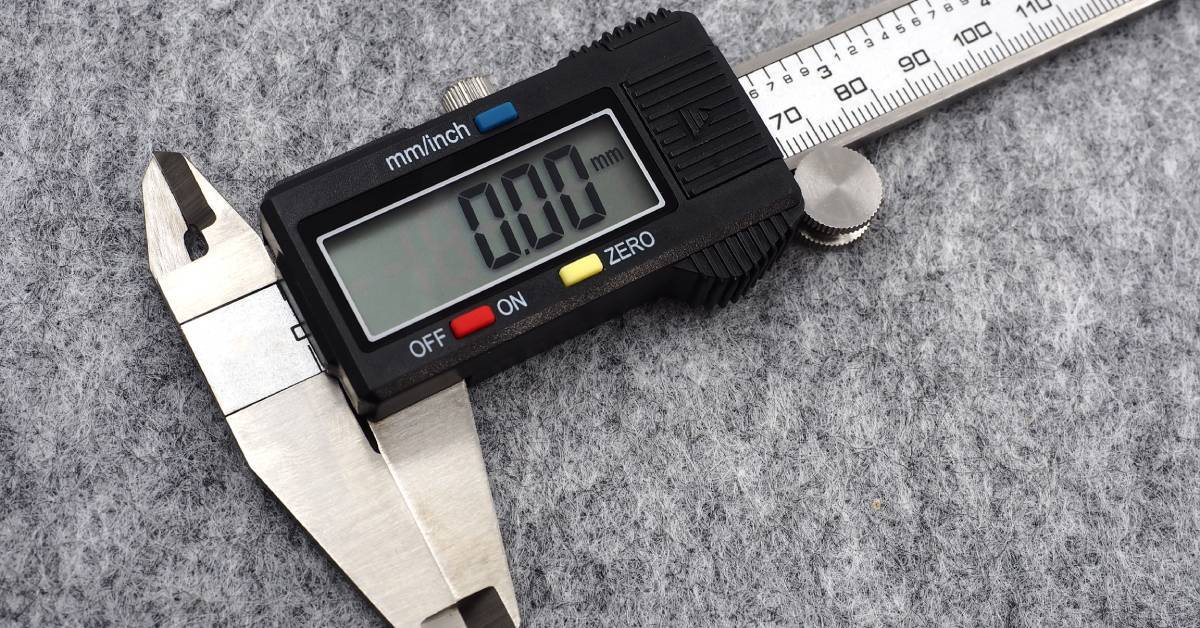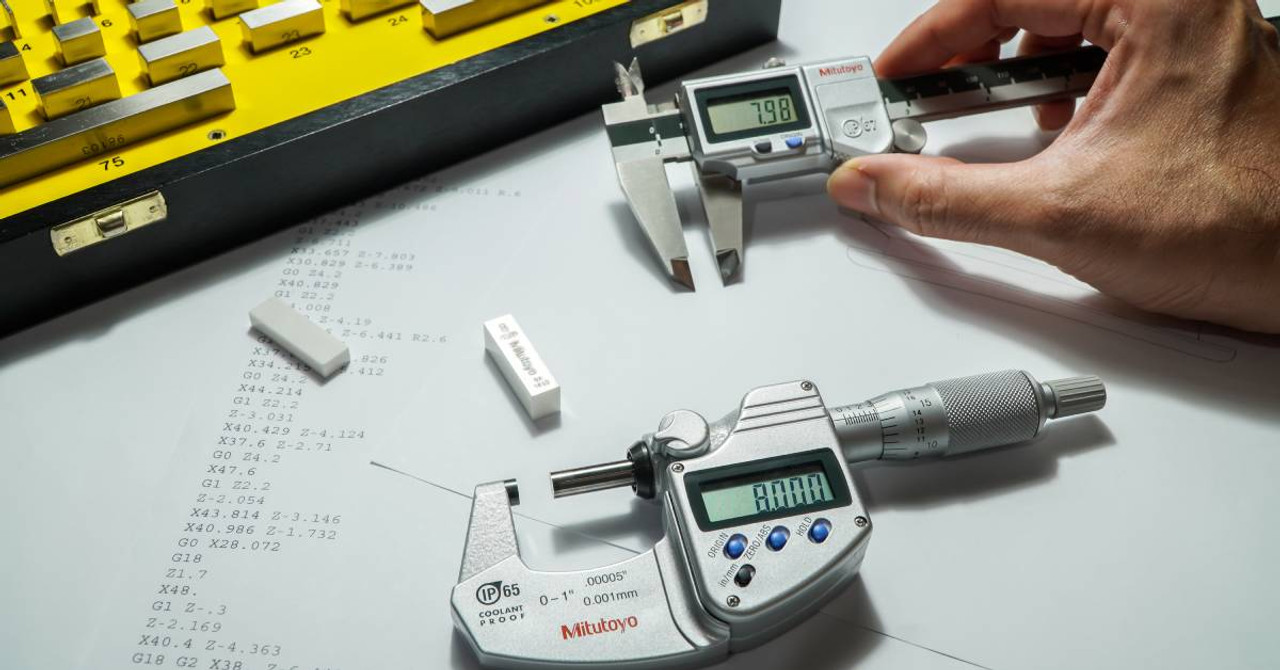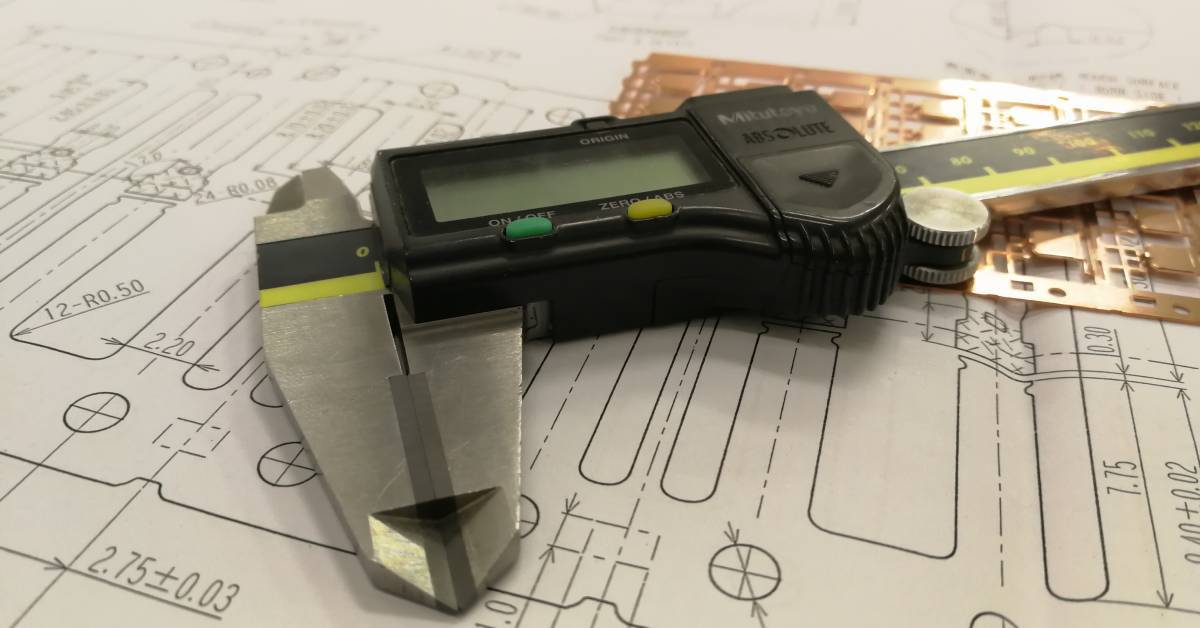Having the right instruments to take measurements in various environments can ensure precision and accuracy and prevent errors. Among these indispensable tools, digital calipers have revolutionized measurement recording, providing unparalleled accuracy and ease of use.
A slight mistake in a measurement could lead to compromised product distribution, mishandling, or wrong dosage. This could diminish a company's reputation and lead to a chain reaction that impacts other measurements.
This ultimate beginner’s guide to digital calipers will help you explore their features, benefits, and how to use them effectively. From understanding the basics to mastering advanced techniques, you will gain the fundamental knowledge and skills to confidently make accurate measurements.

What Are Digital Calipers?
Digital calipers are precision instruments used to measure the dimensions of objects with high accuracy. They are an electronic alternative to traditional vernier calipers, offering ease of use and precise measurements down to fractions of a millimeter.
These calipers feature a digital display that provides an instant readout of the measured value, eliminating the need for interpretation and reducing the likelihood of human error. They have additional features such as data hold, zero setting, and inch-metric conversion, making them versatile tools suitable for various applications.
Why Choose Digital Calipers?
Digital calipers offer several advantages over their analog counterparts. Their digital display provides clear and accurate readings, allowing for quick and easy measurements. The measurement values are displayed in a large, easy-to-read format, eliminating the need for manual interpretation and reducing the chances of misreading the scale.
The Mitutoyo Digimatic calipers offer a higher degree of precision and can measure fractions of a millimeter or even smaller increments. This precision is crucial in many industries where accuracy is paramount, such as engineering, manufacturing, and research. Digital calipers are user-friendly and suitable for beginners, as they require minimal training and offer intuitive operation.
Understanding the Components of Digital Calipers
To effectively use digital calipers, it is essential to understand their components and how they work together. The main parts of a digital caliper are the beam, jaws, LCD display, depth rod, and battery compartment.
The beam is the long ruler-like component that extends from the main body and features a scale with markings for measurement readings. The jaws hold the object being measured securely. The LCD display shows the measured values in either decimal inches or millimeters, depending on the user's preference. The depth rod makes it possible to measure depths beyond the jaws' reach.
How To Use Digital Calipers
Using digital calipers is a straightforward process that involves a few simple steps.
- Select the desired measuring unit (inches or millimeters) using the UNIT button.
- Close the caliper's jaws and press ZERO/ABS to set it to zero.
- Place the measured object between the jaws, holding it securely.
- Read the measurement value displayed on the LCD screen, taking note of any decimal places.
- To measure depth, extend the depth rod and place it on top of the measured object.
- After using the caliper, turn it off to preserve battery life.
Different Measurement Modes and Their Applications
Digital calipers offer different measurement modes, making them versatile tools suitable for various applications. The three main modes are inside, outside, and step measurement. Inside mode measures internal dimensions such as the diameter of a hole or groove. Outside mode is used to measure external dimensions like the width or thickness of an object.
Step measurement mode allows for measuring steps and offsets in a workpiece. These different modes make digital calipers suitable for various tasks, including woodworking, metalworking, and quality control.
Common Problems and Solutions
Using digital calipers as a beginner may present some challenges, but with the right troubleshooting steps, you can overcome these issues. These are some of the most common problems:
Display Malfunction or Error Messages
If the digital display is not working or is showing error messages, you should check whether the battery is properly installed and has sufficient power. Replace the battery if necessary. Ensure the caliper is clean and free from any debris or moisture that may interfere with the display.
Inaccurate Measurements
If the measurements displayed by the digital caliper are inconsistent or inaccurate, ensure the caliper jaws are clean and aligned before retaking measurements. Avoid excessive pressure or tilting of the caliper while measuring. Test the caliper's accuracy by measuring a known standard or reference object.
Difficulty Reading Small or Tight Spaces
The digital caliper can have difficulty measuring narrow or confined spaces. In such instances, use calipers with a slim design or smaller jaws specifically designed for tight spaces. Consider using specialized attachments or extensions that allow you to reach difficult-to-access areas.
Maintenance Tips
Proper maintenance is crucial for ensuring the accuracy and longevity of digital calipers. After each use, clean and dry the caliper using a soft cloth or brush to remove any debris or dust from the scale and jaws.
Avoid exposing the caliper to extreme temperatures or corrosive materials, as this can affect its performance. It's also essential to replace the battery to maintain optimal functionality. This will ensure that your digital calipers continue to deliver precise measurements and reliable performance.
Advanced Techniques for Precision Measurements
If you are seeking to elevate your measurement capabilities to the next level, here are some advanced techniques to consider:
- Utilize measurement aids: Consider using measurement aids like V-blocks or gauge blocks. These tools provide a stable and consistent reference surface for more precise measurements.
- Explore calibration procedures: Regularly calibrating your digital caliper is essential for maintaining accuracy. Follow the manufacturer's guidelines for calibration.
- Combine measurement techniques: To achieve the highest level of precision, use multiple measurement methods together. By utilizing the inside and outside jaws of a caliper, you can measure the thickness of a material more accurately while accounting for inconsistencies in its flatness.
- Factor in environmental conditions: Consider the influence of environmental factors such as temperature, humidity, and air pressure on your measurements. Adjustments may be necessary to compensate for these variables, especially when working in extreme conditions.
Choosing the Right Digital Calipers for Your Needs
Selecting the optimal digital calipers for your specific requirements is crucial for accurate and efficient measurements. Determine the measuring range that aligns with your intended applications to ensure the calipers accommodate your working dimensions.
Precision is another essential aspect, as it determines the level of accuracy you can achieve in your measurements. Look for higher-precision calipers, typically indicated by the number of decimal places or the smallest measurement increment they can detect. Consider the materials used, the build quality, and any additional protective features of the device that can enhance its longevity.
Precision and accuracy are paramount when taking measurements, and digital calipers are essential tools to meet these demands. If you want to streamline your processes, Advanced Systems and Designs provides innovative solutions that make permanently and accurately recording data seamless.
Integrating advanced digital measurement systems into your workflow ensures that quality documents are always reliable and ready for customer review. Take the next step in enhancing your measurement and documentation processes by exploring the tools and systems offered by Advanced Systems and Designs. Elevate your projects with confidence and precision today!


